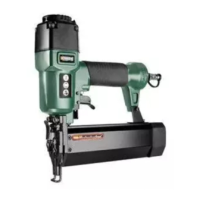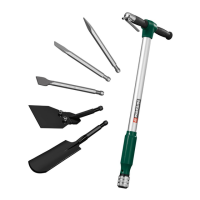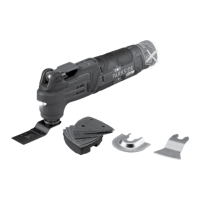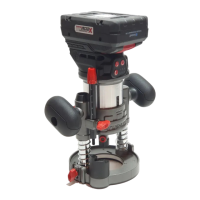8
G B I E N I CY
• Do not abuse the cord. Never
yank the cord do disconnect it from the
socket. Keep the cord away from heat,
oil and sham edges.
• Secure work. Where possible use
clamps or a vice to hold the work. It is
safer than using your hand.
• Do not overreach. Keep proper
footing and balance at all times.
This enables better control of the pow-
er tool in unexpected situations.
• Maintain tools with care.
Many accidents are caused by poorly
maintained power tools.
- Keep cutting tools sharp and clean
for better and safer performance.
- Follow instruction for lubricating and
changing accessories.
- Inspect tool cords periodically and if
damaged have them repaired by an
authorized service facility.
- Inspect extension cords periodically
and replace if damaged.
- Keep handles dry, clean and free
from oil and grease.
• Disconnect tools. When not in use,
before servicing and when changing
accessories disconnect tools from the
power supply.
Such preventive safety measures re-
duce the risk of starting the power tool
accidentaIly.
• Remove adjusting keys and
wrenches. Form the habit of check-
ing to see that keys and adjusting
wrenches are removed from the tool
before turning it on. A wrench or a
key left attached to a rotating part of
the power tool may result in personal
injury.
• Avoid unintentional starting.
Ensure switch is in “off” position when
plugging in.
- Do not use tools in the presence of
Power tools create sparks which may
ignite the dust or fumes.
• Guard against electric shock.
Avoid body contact with earthed or
grounded surfaces (e.g. pipes, radia-
tors, ranges, refrigerators).
• Keep other persons away.
Do not let persons, especially children,
not involved in the work touch the tool
or the extension cord and keep them
away from the work area.
• Store idle tools. When not in use,
tools should be stored in a dry locked-
up place, out of reach of children.
• Do not force the tool. It will do
the job better and safer at the rate for
which it was intended.
• Use the right tool.
- Do not force small tools to do the job
of a heavy duty tool.
- Do not use tools for purposes not
intended; for example do not use cir-
cular saws to cut tree limbs or logs.
Use of the power tool for operations
different from those intended could re-
sult in a hazardous situation.
• Dress properly.
- Do not wear loose clothing or jewellery,
they can be caught in moving parts.
- Anti-slip footwear is recommended
when working outdoors.
- Wear protective hair covering to con-
tain long hair.
• Use protective equipment.
- Use safety glasses.
- Use face or dust mask if working op-
erations create dust.
• Connect dust extraction equip-
ment. If the tool is provided for the
connection of dust extraction and col-
lecting equipment, ensure these are
connected and properly used.
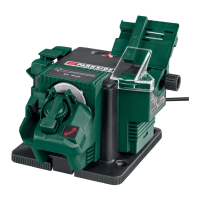
